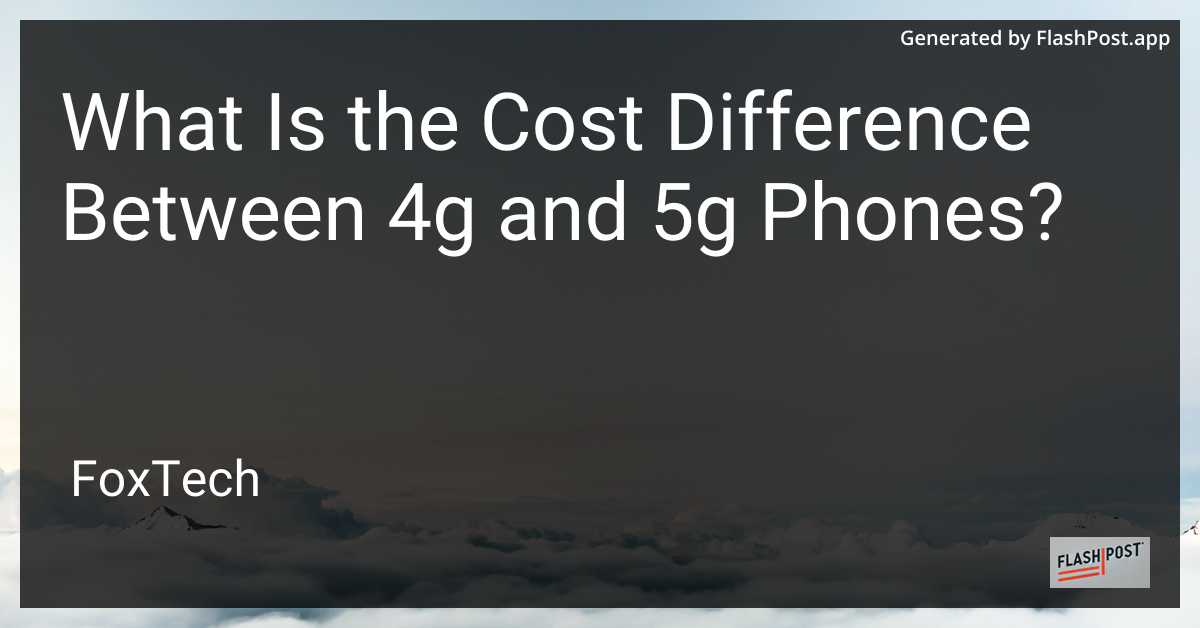
As the world of mobile technology rapidly advances, the transition from 4G to 5G is among the most significant shifts we've seen in recent years. With the promise of lightning-fast internet speeds and enhanced connectivity, 5G is catching the eye of tech enthusiasts and everyday consumers alike. However, a common question arises: what is the cost difference between 4G and 5G phones? This article delves into the pricing dynamics of 4G and 5G phones, so you can make informed purchasing decisions.
Understanding the Basics: 4G vs. 5G Technology
Before we jump into the cost analysis, it's crucial to understand what differentiates 4G from 5G:
-
4G Technology: Offers download speeds of up to 100 Mbps, supporting high-definition streaming, gaming, and video conferencing. It covers most urban and rural areas.
-
5G Technology: Promises download speeds reaching 10 Gbps, allowing for ultra-high-definition streaming, virtual reality applications, and rapid data transfer. It is currently expanding from urban to broader areas.
Pricing Trends in 4G Phones
4G phones have established themselves as the standard option for many users over the last decade. As a mature technology, the prices for 4G phones vary widely, often depending on brand, features, and overall build quality. Some key points regarding 4G phone pricing are:
-
Entry-Level 4G Phones: Generally start from $100 to $200, providing basic functionalities and limited performance features.
-
Mid-Range 4G Phones: Priced between $200 and $500, these devices offer better performance, more features, and improved camera specifications.
-
Premium 4G Phones: Range from $500 to $1,000 or more, featuring top-tier specifications, superior build quality, and advanced features.
Pricing Dynamics in 5G Phones
The adoption of 5G technology is progressively becoming mainstream. However, as a relatively new technology, 5G phones are generally priced higher. Here's a breakdown of the cost spectrum:
-
Entry-Level 5G Phones: Starting from around $300, these devices offer basic 5G capabilities with limited additional features.
-
Mid-Range 5G Phones: Price ranges from $500 to $800, balancing cost and cutting-edge technology with additional features and improved performance.
-
Premium 5G Phones: Typically priced over $1,000, these phones provide the latest innovations, top performance, and numerous high-end features.
Factors Influencing the Price Discrepancy
Several factors contribute to the cost difference between 4G and 5G phones:
-
Development and Deployment Costs: 5G is a newer technology that requires significant investment in network infrastructure, which is reflected in the price.
-
Component Costs: 5G phones require advanced components, such as upgraded processors and modems, which directly influence their price points.
-
Market Demand and Competition: As consumer demand grows and more manufacturers enter the market, pricing strategies and competition can impact costs differently for both 4G and 5G phones.
Conclusion
In summary, the transition from 4G to 5G is not just about faster speeds and better connectivity—it also involves a noticeable price difference. 5G phones tend to be more expensive due to newer technology and additional component requirements. However, as the technology matures and becomes more mainstream, we can anticipate price adjustments and more budget-friendly options entering the market. Whether you're considering an upgrade now or planning for the near future, understanding these price dynamics will aid in making the right choice.
For more cost-effective ways to improve your phone experience, check out affordable polarizing filters for iPhone.